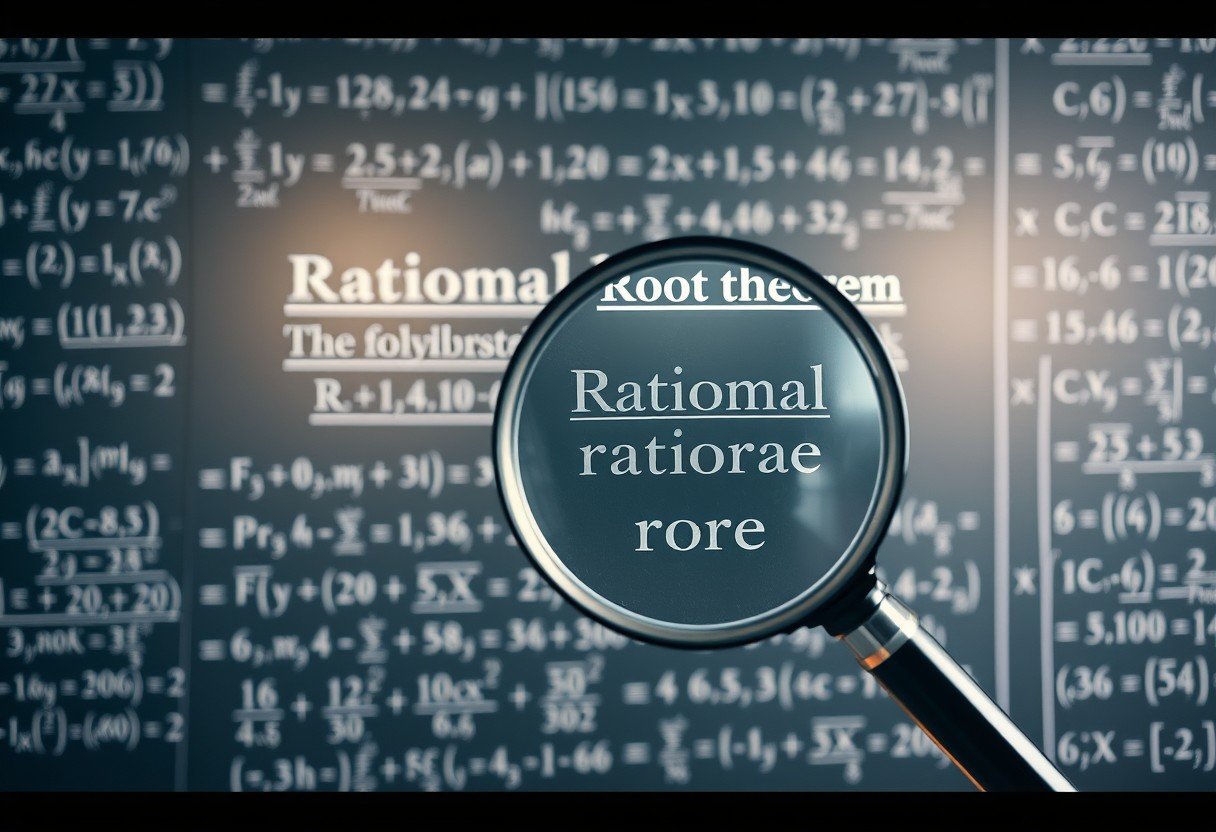Have you ever wondered how many solutions a complex math equation can have? The answer lies in a key principle called the Fundamental Theorem of Algebra. This theorem provides a straightforward rule: the number of roots a polynomial function has is exactly equal to its highest exponent. So, if you’re looking for a polynomial with exactly 8 roots, you simply need to find one with a degree of 8. This concept is a cornerstone of algebra.
What is the Fundamental Theorem of Algebra?
The Fundamental Theorem of Algebra is a crucial rule in mathematics that simplifies how we think about polynomial equations. It states that any non-constant polynomial with a degree of ‘n’ will have precisely ‘n’ roots. These roots can be real or complex numbers.
This means you can predict the total number of solutions just by looking at the polynomial’s highest power. For a polynomial function to have exactly 8 roots, its degree must be 8. This rule removes the guesswork and provides a solid foundation for solving these complex equations. It connects the structure of a polynomial directly to the number of answers it holds.
Understanding this theorem is essential for anyone studying algebra or higher math. It guarantees that a solution exists for every polynomial equation, which is a powerful concept in problem-solving.
Understanding the Basics of a Polynomial Function
A polynomial function is an expression made up of variables, coefficients, and exponents. It looks something like f(x) = a_n*x^n + a_(n-1)*x^(n-1) + … + a_0. The key here is that the exponents must be whole numbers.
The “degree” of the polynomial is the highest exponent of the variable. This single number tells you a lot about the function, including its shape on a graph and, most importantly, its total number of roots.
The “roots” of a polynomial are the values of x that make the function equal to zero. You can think of them as the points where the function’s graph crosses or touches the x-axis. Each root is a solution to the polynomial equation f(x) = 0.
What Kinds of Roots can an 8th Degree Polynomial have?
An 8th-degree polynomial will have exactly eight roots, but these roots don’t all have to be the same type. They can be a mix of real and complex numbers, and some may even be repeated.
Real roots are the points you can see on a graph where the function intersects the x-axis. Complex roots, on the other hand, do not appear as x-intercepts. They always come in pairs known as “conjugate pairs.” This means if `a + bi` is a root, then `a – bi` must also be a root.
A polynomial can also have roots with “multiplicity.” This just means a root is repeated. For example, a root with a multiplicity of 3 counts as three roots toward the total of eight.
- Real Roots: These are regular numbers where the graph hits the x-axis.
- Complex Roots: These roots have an imaginary part and always show up in pairs. An 8th-degree polynomial could have 0, 2, 4, 6, or 8 complex roots.
- Repeated Roots (Multiplicity): A single root value can count multiple times. For instance, `(x-2)^4` means the root x=2 has a multiplicity of 4.
This variety means an 8th-degree polynomial can have many different combinations of roots, as long as the total count adds up to eight.
| Number of Real Roots | Number of Complex Roots | Total Roots |
|---|---|---|
| 8 | 0 | 8 |
| 6 | 2 (1 conjugate pair) | 8 |
| 4 | 4 (2 conjugate pairs) | 8 |
| 2 | 6 (3 conjugate pairs) | 8 |
| 0 | 8 (4 conjugate pairs) | 8 |
How to Identify a Polynomial with 8 Roots
Identifying a polynomial function that has exactly 8 roots is surprisingly simple. You just need to look for the highest exponent in the equation. According to the Fundamental Theorem of Algebra, if the highest exponent, or degree, is 8, the polynomial is guaranteed to have 8 roots.
For example, consider the function `f(x) = 3x^8 – 5x^5 + 2x^2 – 10`. The highest power of x in this expression is 8. Therefore, this function has exactly 8 roots.
The coefficients, or the numbers in front of the variables, will determine what those roots are (whether they are real or complex), but they do not change the total number of roots. The degree is the only thing that matters for the total count.
What does a Degree 8 Polynomial Look like on a Graph?
The graph of a degree 8 polynomial is much more complex than a simple line or parabola. Because of its high degree, it can have multiple turns, creating several peaks and valleys. A polynomial of degree ‘n’ can have up to ‘n-1’ turning points. This means an 8th-degree polynomial can have up to 7 turns.
The roots of the polynomial are visible as the x-intercepts, which are the points where the graph crosses or touches the horizontal x-axis. The way the graph behaves at these points gives clues about the roots. If the graph crosses the axis cleanly, it represents a single root. If it touches the axis and turns back around, it indicates a root with an even multiplicity (like 2, 4, or 6).
By counting the x-intercepts, you can determine the number of real roots. However, remember that the total number of roots is 8, so any “missing” roots from the graph are complex roots, which don’t show up as x-intercepts.
Where are Polynomial Roots Used in the Real World?
The concept of finding polynomial roots isn’t just an abstract classroom exercise; it has vital applications across science, engineering, and technology. These mathematical solutions help professionals model and understand complex systems.
In engineering, especially control systems, the roots of a characteristic polynomial determine the stability of a system. For example, engineers designing an airplane’s autopilot system use polynomial roots to ensure it responds smoothly and doesn’t become unstable.
Similarly, in computer graphics and game design, polynomial equations are used to draw smooth curves and surfaces. Finding the roots of these equations can help determine where objects intersect. Signal processing, which is used in everything from your phone to medical imaging, also relies on polynomials to filter noise and analyze frequencies.
Frequently Asked Questions
What does the Fundamental Theorem of Algebra say about an 8th degree polynomial?
The theorem states that any polynomial of degree 8 will have exactly 8 roots. These roots are counted in the complex number system and include any repeated roots (multiplicities).
Can a polynomial of degree 8 have only complex roots?
Yes, it is possible. Since complex roots must come in conjugate pairs, a degree 8 polynomial can have 4 pairs of complex roots, for a total of 8 complex roots and zero real roots.
Are all 8 roots of a polynomial guaranteed to be different?
No, the roots are not guaranteed to be distinct. A polynomial can have a root that repeats, which is called multiplicity. For example, a function like `f(x) = (x – 5)^8` has only one distinct root (x=5), but it has a multiplicity of 8, so it still counts as 8 roots in total.
How do you find the roots of an 8th degree polynomial?
Finding the roots of a high-degree polynomial can be difficult. While simple factoring sometimes works, most cases require advanced methods like the Rational Root Theorem, synthetic division, or numerical approximation methods like the Newton-Raphson method, often performed with computer software.









Leave a Comment